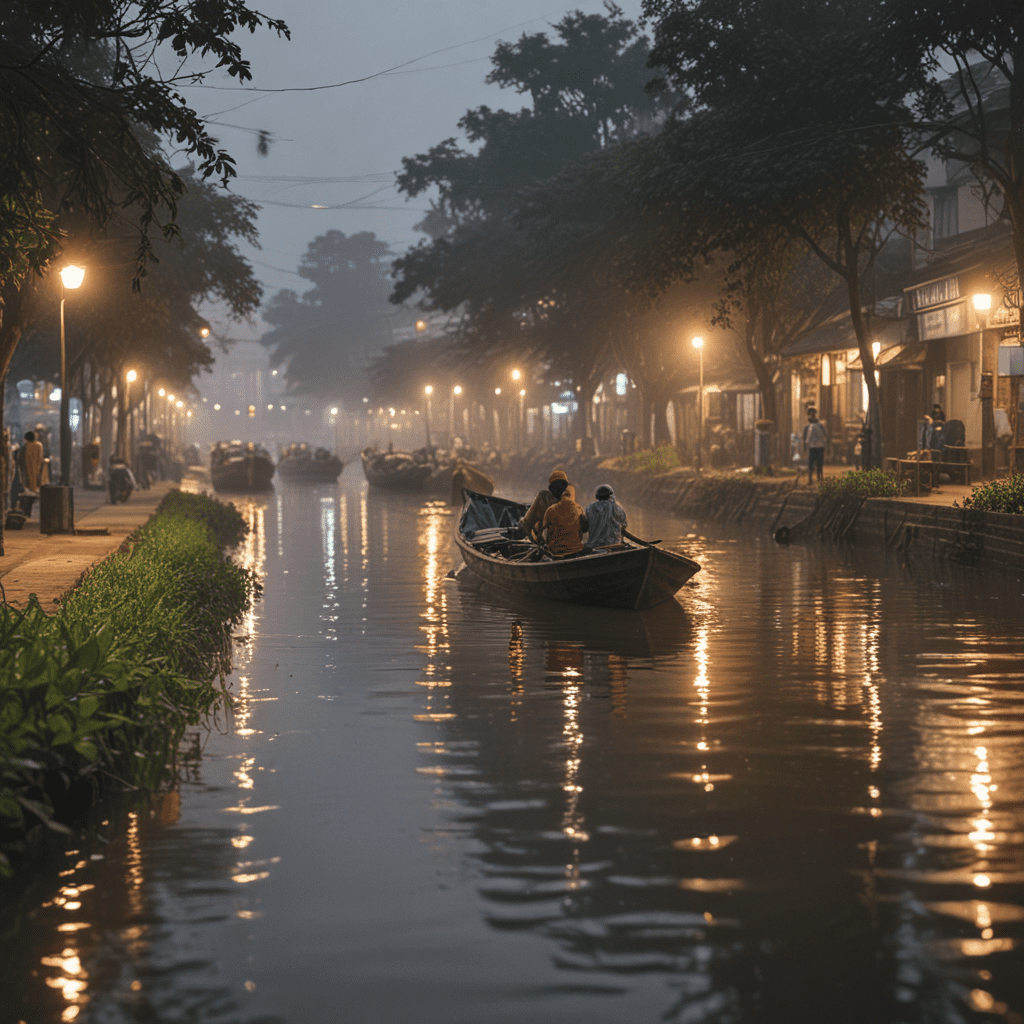Exploring the Waterways of Bangladesh
1. The Mighty Ganges and Its Tributaries
Bangladesh, a land of rivers, is crisscrossed by a network of waterways that play a vital role in its geography, culture, and economy. The mighty Ganges River, originating in the Himalayas, enters Bangladesh in the northwest and flows through the country for over 1,000 kilometers. Along its course, the Ganges is joined by numerous tributaries, including the Padma, the Jamuna, and the Meghna. These rivers form a vast deltaic system that drains into the Bay of Bengal.
2. The Brahmaputra: A Majestic River
The Brahmaputra River, known as the Jamuna in Bangladesh, is one of the largest rivers in the world. It originates in Tibet and flows through northeast India before entering Bangladesh. The Brahmaputra is known for its powerful currents and massive sandbanks, which shift constantly. During the monsoon season, the river swells to enormous proportions, flooding vast areas of land.
3. The Meghna: A Complex and Dynamic Delta
The Meghna River is formed by the confluence of the Ganges and Brahmaputra rivers. It flows through the heart of the Ganges-Brahmaputra Delta, a complex and dynamic ecosystem. The Meghna is a tidal river, meaning that its flow is influenced by the tides. This creates a unique environment that supports a wide variety of plant and animal life.
4. The Sundarbans: A UNESCO World Heritage Site
The Sundarbans is a vast mangrove forest located in the Ganges-Brahmaputra Delta. It is the largest mangrove forest in the world and is home to a diverse array of plant and animal species, including the endangered Bengal tiger. The Sundarbans is a UNESCO World Heritage Site and is recognized for its ecological importance.
5. The Wetlands of Bangladesh: A Critical Ecosystem
Bangladesh is home to a vast network of wetlands, including swamps, marshes, and floodplains. These wetlands play a critical role in the country's ecology. They provide habitat for a variety of plant and animal species, help to regulate flooding, and filter pollutants from the water. The wetlands of Bangladesh are also a source of livelihood for many people, who rely on them for fishing, agriculture, and other activities.
6. Navigating the Waterways: Traditional and Modern Craft
The waterways of Bangladesh have been used for transportation for centuries. Traditional boats, such as the sampan and the dhoni, are still widely used today. These boats are adapted to the unique conditions of the rivers and delta, and they can navigate shallow waters and strong currents. In recent years, modern boats and ships have also been introduced, and they play an important role in the country's economy.
7. Cultural Significance of the Waterways
The waterways of Bangladesh are central to the country's culture. They have been a source of inspiration for poets, artists, and musicians for centuries. The rivers are also the setting for many traditional festivals and ceremonies. For example, the Boat Race Festival is held annually in Dhaka, and it attracts participants from all over the country.
8. Economic Importance of the Waterways
The waterways of Bangladesh are vital to the country's economy. They are used to transport goods and people, and they provide a source of irrigation for agriculture. The rivers also support a thriving fishing industry. In addition, the waterways are a source of hydroelectric power.
9. Environmental Challenges Facing the Waterways
The waterways of Bangladesh are facing a number of environmental challenges. These include pollution, climate change, and deforestation. Pollution from industrial and agricultural sources is a major problem, and it is causing harm to the fish and other wildlife that live in the rivers. Climate change is also a threat, as it is leading to more extreme weather events, such as floods and droughts. Deforestation is another problem, as it is reducing the amount of vegetation that helps to protect the rivers from erosion.
10. Conservation and Sustainable Management Strategies
There are a number of conservation and sustainable management strategies that can be used to protect the waterways of Bangladesh. These include reducing pollution, planting trees, and restoring wetlands. It is also important to educate people about the importance of the waterways and to encourage them to use them in a sustainable way.
FAQ
What is the longest river in Bangladesh?
The Ganges River is the longest river in Bangladesh. It flows for over 1,000 kilometers through the country.What is the largest mangrove forest in the world?
The Sundarbans is the largest mangrove forest in the world. It is located in the Ganges-Brahmaputra Delta in Bangladesh.What is the main economic activity in Bangladesh?
Agriculture is the main economic activity in Bangladesh. The country is a major producer of rice, jute, and tea.
What are the major environmental challenges facing Bangladesh?
Pollution, climate change, and deforestation are the major environmental challenges facing Bangladesh.What can be done to protect the waterways of Bangladesh?
There are a number of conservation and sustainable management strategies that can be used to protect the waterways of Bangladesh. These include reducing pollution, planting trees, and restoring wetlands.


